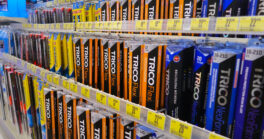Deft maneuvering is helping Russia’s banks dodge the fallout from the credit crunch, but significant risks remain—particularly for smaller banks and their customers.
 |
According to Fitch Ratings, the 2004 Russian liquidity crisis highlighted the volatility of corporate funding, with corporates withdrawing $800 million from one leading Russian private bank. It also highlighted weaknesses in some banks’ funding models, with smaller banks heavily reliant on deposits for customer funding (deposits accounted for 50% to 60% of funding in some cases, meaning that all it would take for the bank to run into funding problems was a few large withdrawals).
Since the 2004 crisis, Fitch reports that interbank confidence among Russian banks has improved. A deposit insurance system was also introduced to strengthen customer confidence in Russia’s banking system. More than 900 Russian banks (reduced from 1,165 following the revoking of banking licenses) are members of the insurance scheme, which guarantees deposits up to 400,000 rubles ($17,000).
The CBR is also in a much stronger position to oil the wheels of the Russian banking sector as higher oil prices means it is sitting on foreign exchange reserves worth $416 billion. So when Russian banks found themselves in the midst of another liquidity crisis, triggered not by domestic events but by the collapse of the subprime mortgage market in the United States, the CBR demonstrated its willingness to avoid a repeat of 2004. At one point in October last year, as overnight lending rates inched up, the central bank pumped $10 billion into the system.
This is in sharp contrast to 2004 when, according to many observers, the CBR was reluctant to act as lender of last resort. “With respect to state support [of Russian banks], there is a drastic difference from 2004, when you had an inactive central bank,” notes Alexander Danilov, a director at Fitch Ratings’ financial institutions group. “The central bank has been more proactive and generally supportive of the banking system, and they have the means to provide support. The CBR introduced additional measures to support liquidity refinancing using corporate eurobonds; previously only ruble bonds were accepted for re-financing.”
Smaller Banks Slip Through Net
The central bank has also increased the range of instruments that could be used as collateral, although for smaller banks this did not help much, as their assets are less liquid. “Smaller banks are finding it even more difficult to get funding from the central bank,” Danilov continues. “Larger state-owned banks have been providers of liquidity to the rest of the sector.”
 |
|
Jonach, ZAO Raiffeisen-bank: “Acquisition of local banks is not an easy process.” |
Although Russian banks were not directly exposed to subprime losses, in recent years they had increased foreign borrowings to help fund the consumer credit expansion in Russia and to diversify their funding base. “Local banks don’t have any subprime assets, but they were still affected by market perceptions about banks and the country,” says Natalia Orlova, chief economist with Russia’s Alfa Bank. She says that in February this year there was an $18 billion outflow of foreign capital from Russia. “Investors are cautious about the sustainability of Russia’s macro story in the long run,” she adds.
Leonid Slipchenko, a banking analyst at UralSib, says for Russian banks that were over-reliant on foreign borrowings, the credit crunch is an indication that old funding models need to change. “The business model employed previously does not work anymore,” he asserts, “and these banks should focus on retail deposits and developing risk management.” But developing a large deposit base is not easy for banks that do not boast an extensive branch network. Roustam Botashev, a banking analyst with UniCredit Aton Capital, says most privately owned banks do not have large deposit bases and rely on international borrowing.
One way of gaining a larger deposit base or branch network is via acquisition, which is what ZAO Raiffeisenbank did when it acquired Impexbank for $550 million last year. The acquisition enabled it to expand its branch network to 250 outlets. ZAO Raiffeisenbank CEO Johann Jonach says it is now the fourth-largest Russian bank in terms of private deposits.
Orlova of Alfa Bank says state-owned banks Sberbank and VTB are able to rely more on foreign borrowing because of their higher ratings, whereas some private banks will be forced to replace funds from local sources. Analysts predict that April will have seen another significant drain on liquidity when quarterly tax payments by Russian corporates, including banks, fell due. “Customer accounts will not be sufficient to cover tax payments,” says Danilov. “Central bank support will still be required. They know it, and they are confident they can provide liquidity.”
According to Orlova, Russia’s ministry of finance has also indicated that it is prepared to auction treasury accounts to make up any shortfall in liquidity for April. There are also plans to distribute funds to Russian banks through the development bank, VEB, and to deposit some of the savings in the State Pension Fund into Russian banks. Orlova says these measures are likely to more significantly affect the availability of liquidity longer term than central bank measures.
Trouble Ahead
Yet risks remain. So far, the large state-owned banks have passed on the liquidity they have received from the central bank to smaller institutions. However, if for some reason they decided not to do so, there could be problems, says Danilov. “Confidence is still fragile,” he continues, “particularly if there is significant turmoil, which is picked up by the press. There could still be problems if customers withdraw their money from banks.”
Orlova says the price Russia will have to pay for maintaining confidence in the banking sector is that it will continue to sustain a large number of smaller banks. Russia has 1,200 banks, although, says Jonach of ZAO Raiffeisen, “Many of the smaller banks are not really banks. They have specific functions for companies.”
Botashev of UniCredit Aton believes that the credit crisis could force further consolidation among Russia’s myriad banks. While the larger state-owned banks have absorbed some of the smaller to medium-size players, foreign banks have played a role in consolidation, with ZAO Raiffeisen acquiring Impexbank, Société Générale acquiring Rosbank, and Barclays’ recent acquisition of retail and commercial bank Expobank for $745 million. German and Scandinavian banks have also made forays into the Russian banking sector.
In 2007, foreign banks’ total assets in the Russian banking sector increased 17.2%, compared to an increase of 11% in 2006, but more than 40% of total banking assets are still in state hands. “I thought foreign banks would use this opportunity to influence the market, but that is not happening,” notes Orlova, adding that RZB (Raiffeisen Zentralbank) and Citi just managed to maintain their market share in 2007. “There was a lot of expectation that foreign banks would become the buyers of smaller Russian banks, but with the current global market problems, the number of potential buyers or strategic partners is declining,” she says.
And the foreign banks in Russia do not necessarily want to be mass-market players. “We do not want to be a mass bank here in Russia,” says Jonach of ZAO Raiffeisen. “We want to focus on quality of service and reliability.” ZAO Raiffeisen’s growth over the past five years in the Russian market has averaged 50%. However, Jonach says that is likely to reduce to 25% to 30% in the next five years.
A lot of the growth in the Russian banking sector has been fueled by a consumer credit boom. According to UniCredit Group’s CEE Banking Study 2006, Russia and the Ukraine will account for 60% of new banking business volumes between 2007 and 2009. Retail loans in Russia are projected to grow by 52% over the same period, double the rate achieved by the CEE market as a whole. However, with credit availability now a major issue, Botashev says those banks that loosened underwriting standards in the race for more deposits are tightening them again.
The consumer credit boom in Russia is likely to continue, though, albeit at a slower pace. Credit card penetration remains relatively low, and Slipchenko says that Russia is also under-served when it comes to debit cards and mortgages. According to Fitch Ratings, the banking assets-to-GDP ratio in Russia reached 54% by the end of 2006, compared with 45% by the end of 2005, which is still relatively low compared to other Central and East European countries. The loans-to-GDP ratio was 30% in Russia at the end of 2006 compared with 37% in the Czech Republic, 48% in Kazakhstan and 54% in Hungary.
 |
|
Orlova, Alfa Bank: “There was a lot of expectation that foreign banks would become the buyers of smaller Russian banks.” |
With the credit crunch in full swing, Orlova believes that Russian banks will focus more on the corporate sector, which is more cost efficient, as banks do not need to invest in a branch network to service their corporate clients. “Corporate clients are returning from international markets,” she says. According to Alfa Bank, corporate lending reached $382 billion in January, comprising 46% of total assets, up from 43% a year earlier.
Those banks that are more likely to be able to meet corporate demands for credit are those with large deposit bases and sufficient liquidity. A large deposit base requires substantial branch and network capabilities, particularly in a country of Russia’s size. However, Jonach points out that branch expansion in Russia is difficult. “Unfortunately you cannot buy ready-made branches in Russia which you can use immediately,” he says. “Our upgrading of branches took one and a half years. We spent a huge effort training staff. Acquisition of local banks is not an easy process. Technology is an issue. The biggest challenge is to find the right people, but on the positive side there is significant market potential.”
By leveraging Impexbank’s extensive branch network, ZAO Raiffeisen also plans to penetrate the riskier SME lending sector, which it says is growing at a rate of 100% annually. “A lot of them don’t have balance sheets we can access,” says Jonach. “It is a labor-intensive process.”
With the Moscow and St. Petersburg markets more or less saturated in terms of banks, Botashev says state-owned banks like VTB are focusing on having a branch in every Russian city with a population of more than 20,000. Expansion into neighboring countries such as the Ukraine and Kazakhstan also presents growth opportunities for Russian banks.
More recently, according to Botashev, Russian banks are also looking to expand further afield. Sberbank, for example, intends to expand into 20 new markets. Yet Slipchenko believes its plans may be overambitious. “They should focus on local customers and expanding their mix of products,” he says.
Anita Hawser



